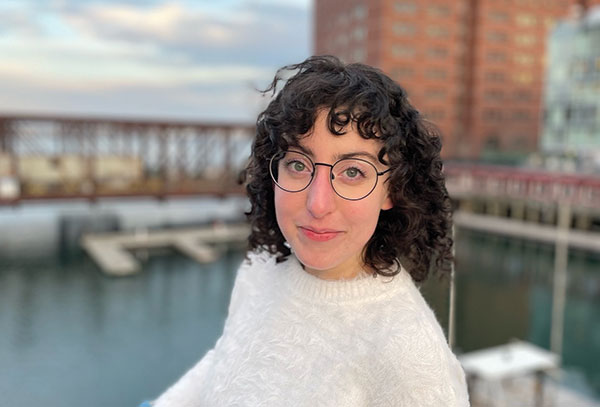The Science of Storytelling
The Science of Storytelling
A journalist aims to help readers understand the latest in scientific discoveries and how that news shapes their lives.

SCIENCE TIMES: An independent science journalist, Sklar writes regularly for National Geographic and other outlets, combining her grounding in brain and cognitive sciences and anthropology to explore both the latest in breakthroughs and the ways that stories are told.
Like many people at the start of the pandemic, Julia Sklar ’14 found herself spending a lot of time at home, trying to keep up the professional connections she had built as an independent science journalist.
Interviews with scientists in their labs were out, and conferences had been postponed.
Like most people, Sklar’s professional and social life began taking place entirely through video calls, particularly the video conferencing app Zoom.
And she noticed a refrain: Why was it, so many wondered aloud and on Twitter, that they could feel emotionally and creatively energized by a day of in-person interaction, yet so drained after a day on Zoom?
Having worked as a science journalist for a decade, Sklar knew there was research that could explain the experience.
She recalled learning about a study at Boston Children’s Hospital that explored how children with autism engaged more effectively with their speech and language therapists when those meetings were video-mediated compared to when therapy took place in person.
“I thought that was so fascinating, because just anecdotally in my own life, I felt the opposite—I always had a really hard time with video chatting and found it really tiring.”
When a National Geographic editor joked on Twitter about commissioning a “10,000-word cover story” about the phenomenon, Sklar was ready.
“I wrote a story for them about the neuroscience of ‘Zoom fatigue,’ and the perspective of how, for many people with autism, Zoom calls were making their regular jobs and social interactions a little bit easier and more accessible.”
The story ended up going viral and was one of the internet’s most-read articles in 2020.
But as other outlets picked up the story and wrote their own versions, Sklar noticed that the positive aspects were drowned out.
“Zoom fatigue just became the word that everybody was talking about and the angle about the technology being an accessibility tool for some people completely got lost,” she says. “To me, that was the most exciting and interesting part of this. It was disheartening to watch the news cycle turn out that way.”
Since the first query to that editor, the Rochester brain and cognitive sciences and anthropology double major has written several stories for National Geographic, and last year, produced The Brain: Discover the Ways Your Mind Works, an 18,000-word volume that the publisher calls a “bookazine.”
The work draws on the latest research into the neuroscience of perception, flavor, chronic pain, and consciousness to provide a status report of sorts on the human brain, “the final frontier of human biology,” as Sklar notes. Forthcoming from National Geographic in April 2024 is her second bookazine, a new volume devoted to the science behind stress.
Sklar credits her double major and other campus opportunities with setting her on her path as a science journalist. In BCS classes, she became grounded in the world of modern science and how research takes place. She then honed many of her journalism skills at the Campus Times, where she worked as an editor throughout college.
After reading a profile of Fred Guterl ’81, then the executive editor of Scientific American, in Rochester Review, she reached out to Guterl, who provided helpful advice on how to pursue her goal of bringing the two interests together and becoming a professional science journalist.
Now, she sees her anthropology courses as also having played a pivotal role.
“We dissected some of the problematic history of anthropology, particularly through a colonial lens. I find that really helpful today,” she says. “Whose right is it to tell a certain community’s story? That comes up a lot with representation and diversity in the journalism industry.”
Based in Boston, Sklar was in Vienna, Austria, this winter for a fellowship at the Complexity Science Hub, where she worked on a project exploring how urban infrastructure influences human health. At the same time, she was teaching an online graduate level science journalism course at Johns Hopkins.
As part of the fellowship, she conducted workshops designed to improve the ways in which scientists and journalists engage with one another.
Improving those conversations is key to ensuring that the public remains informed about how scientific advances influence modern life, she says.
While fascinating, news about scientific discoveries, breakthroughs, and other research is only part of the story.
“The thing that’s always the most interesting to me is how all of these innovations impact real lives or have the potential to change the society that we live in.”
— Written by Scott Hauser
This article originally appeared in the spring 2023 issue of Rochester Review magazine.


